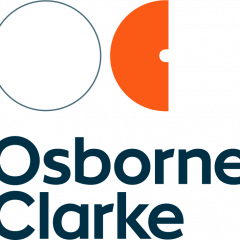L’Oreal had sued Bellure for the use of its trade marks in a perfume comparison chart. The Court of Appeal rejected L’Oreal’s appeal but referred questions to the ECJ, including whether Bellure’s use of L’Oréal’s marks constituted infringement. The ECJ held that it did, but would the English court agree? Richard Menzies answers.
Topic: Brands
Who: L'Oréal SA & Ors v Bellure NV & Ors [2010] EWCA Civ 535
When: May 2010
Where: Court of Appeal, UK
Law stated as at: 21 May 2010
What happened:
L'Oréal had sued Bellure for trade mark infringement and passing off as a result of Bellure's sale of smell and look-alike perfumes, and the use of L'Oréal's trade marks on a comparison chart. L'Oréal alleged that the defendants' use of comparison lists for each of the defendants' ranges of product, showing which products correspond to which L'Oréal perfume, infringed its registered trade marks for those perfumes. At trial, Lewison J upheld the trade mark infringement claim for some of the defendants' products, but he dismissed the passing off claim. All parties appealed – L'Oréal on the passing off/unfair competition points and the defendants on the issue of trade mark liability.
In the leading judgement given by Lord Justice Jacob (Jacob LJ), the Court of Appeal rejected L'Oréal's appeal but referred a series of questions to the ECJ, including asking whether use by the defendants of L'Oréal's marks in comparison lists constitutes infringement under Article 5(1)(a) of the Trade Marks Directive (the "Directive"), and whether such use is permitted under the "honest practices" defence under Article 6(1)(b) of the Directive and the Comparative Advertising Directive (the "CAD"). It also asked what factors need to be considered when deciding whether a later trade mark has taken unfair advantage of, or is detrimental to, the distinctive character or repute of an earlier trade mark under Article 5(2) of the Directive.
The ECJ ruling
• The use of L'Oreal's registered trade marks in a comparative advertisement (in the form of price and smell comparison lists) could constitute infringing use under Article 5(1)(a) of the Directive, even where such use is not capable of jeopardising the essential function of the mark, provided that such use affects or is liable to affect one of the other functions of the mark, in particular that of guaranteeing the quality of the goods or services in question and those of communication, investment or advertising.
• Article 3a(1)(h) of the CAD prevents an advertiser from stating explicitly or implicitly in comparative advertising that the product marketed by him is an imitation of a product bearing a well-known trade mark. The advantage gained by the advertiser as a result of such unlawful comparative advertising must be considered to be an advantage taken unfairly of the reputation of that mark within the meaning of Article 3a(1)(g) of the CAD.
• Unfair advantage could be taken of the reputation of a mark under Article 5(2) of the Directive without the need to show confusion or a likelihood of detriment to the distinctive character or the repute of the mark or, more generally, to its proprietor.
The Court of Appeal decision
A cri de coeur
Before considering the substantive issues, Jacob LJ launched a scathing attack on the ECJ decision. Noting that even though the defendants' perfumes were lawful and did smell like L'Oréal's perfumes, the ECJ decision effectively muzzled the defendants from saying so. According to Jacob LJ, the " ECJ's decision in this case means that poor consumers are the losers. Only the poor would dream of buying the defendants' products. The real thing is beyond their wildest dreams. Yet they are denied their right to receive information which would give them a little bit of pleasure; the ability to buy a product for a euro or so which they know smells like a famous perfume".
Jacob LJ then moved on to apply the ECJ's decision to the facts in the case.
Did the use of the trade marks fall within Article 5(1)(a) of the Directive?
On the basis of the ECJ's decision, Jacob LJ was obliged to hold that the defendants' use of L'Oréal's trade marks in the comparison lists went beyond "purely descriptive" use because it was used for advertising and therefore fell within Article 5(1)(a) of the Directive. The use of L'Oréal's trade marks in the advertisements therefore affected the advertising function of the trade marks, one of the protected functions of the trade mark identified by the ECJ. Jacob LJ was at some pains to point out that there was nothing in the legislation to support the ECJ's argument for additional scope of trade mark protection, noting that he was obliged to make this finding only "because the Court has said so" and not on any objective basis.
Did the use of the trade marks comply with the CAD?
Even though the defendants' use of L'Oréal's marks fell within Article 5(1)(a) of the Directive, the use would not be infringing if it fell within the "safe harbour" of Article 3a(1) of the CAD. The key consideration was whether the defendants' advertisement fulfilled the requirements of Article 3a(1)(h), which provides that an advertisement must not "present goods or services as imitations or replicas of goods or services bearing a protected trade mark or trade name". Jacob LJ said that he was forced to conclude that the defendants' truthful statement that its product had an essential characteristic (smell) of the trade mark owner's product amounted to saying the product is an "imitation or replica" and therefore fell outside the "safe harbour" of the CAD.
Did the use of the trade marks fall within article 5(2) of the Directive?
For Article 5(2) infringement it is necessary to show detriment to either the distinctive character or repute of the mark or unfair advantage taken of the distinctive character or repute of the mark. Jacob LJ noted that as there was infringement under Article 5(1)(a) it was not necessary for him to look at Article 5(2) but he nevertheless chose to do so. Jacob LJ noted that the ECJ decision meant that all free riding on the coat-tails of the sort carried out by the defendants was automatically unfair and therefore fell foul of Article 5(2) Jacob LJ emphasised that he did not welcome this conclusion, noting that it "amounts to a pointless monopoly".
Why this matters:
The decision will have an important impact both on brand owners, advertising practices and consumers. Major brand owners will welcome the decision as it will make it more difficult for companies to use comparison lists to advertise their products as substitutes for the "real thing". Companies using comparison lists will need to be more circumspect in their advertising practices to avoid the risk of an infringement action by brand owners. For consumers, this ruling may have a negative effect on competition and pricing. As Jacob LJ noted: "If a trader cannot (when it is truly the case) say: "my goods are the same as Brand X (a famous registered mark) but half the price", I think there is a real danger that important areas of trade will not be open to proper competition".
Richard.Menzies
Solicitor
Osborne Clarke, London
richard.menzies@osborneclarke.com






